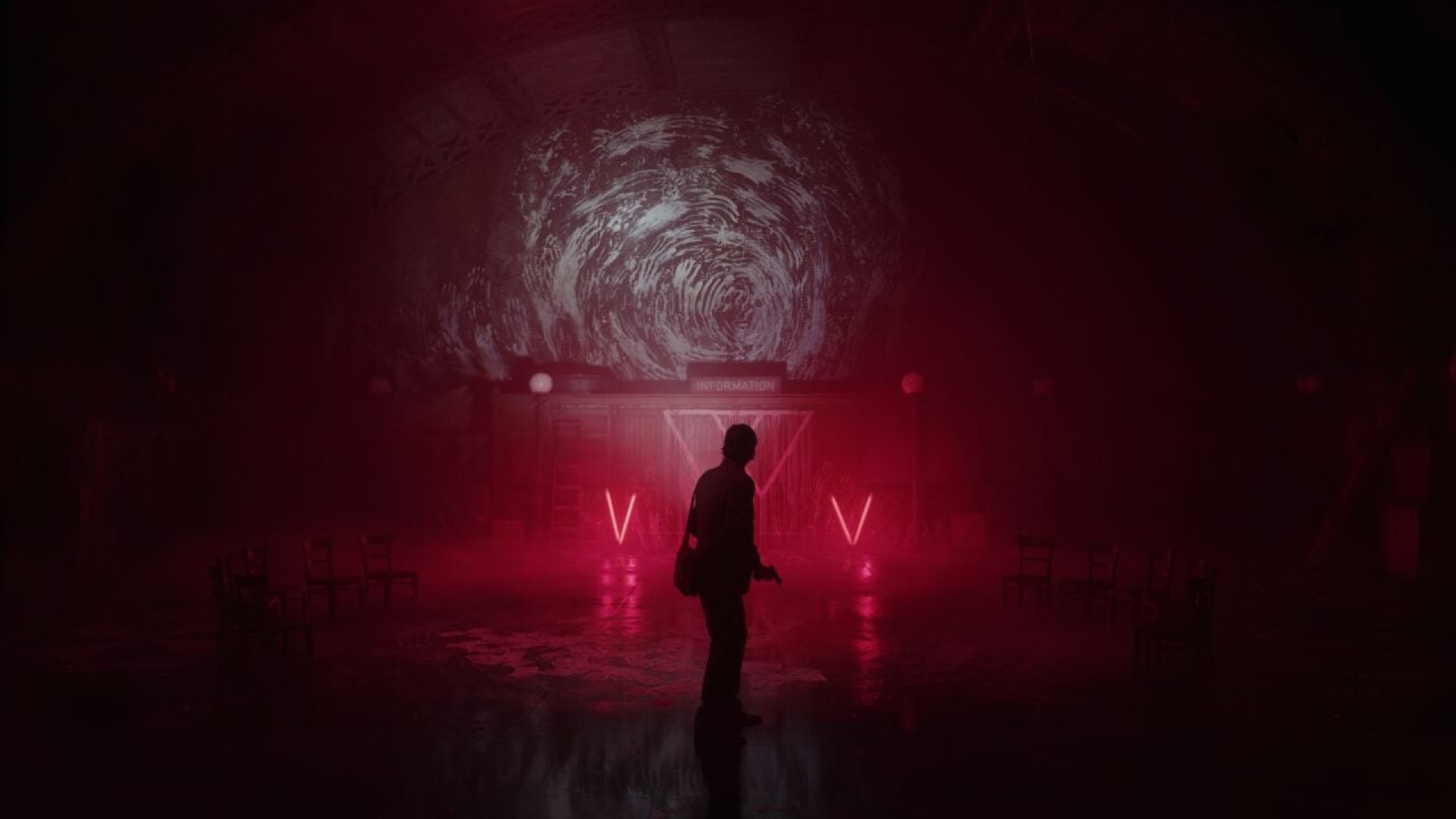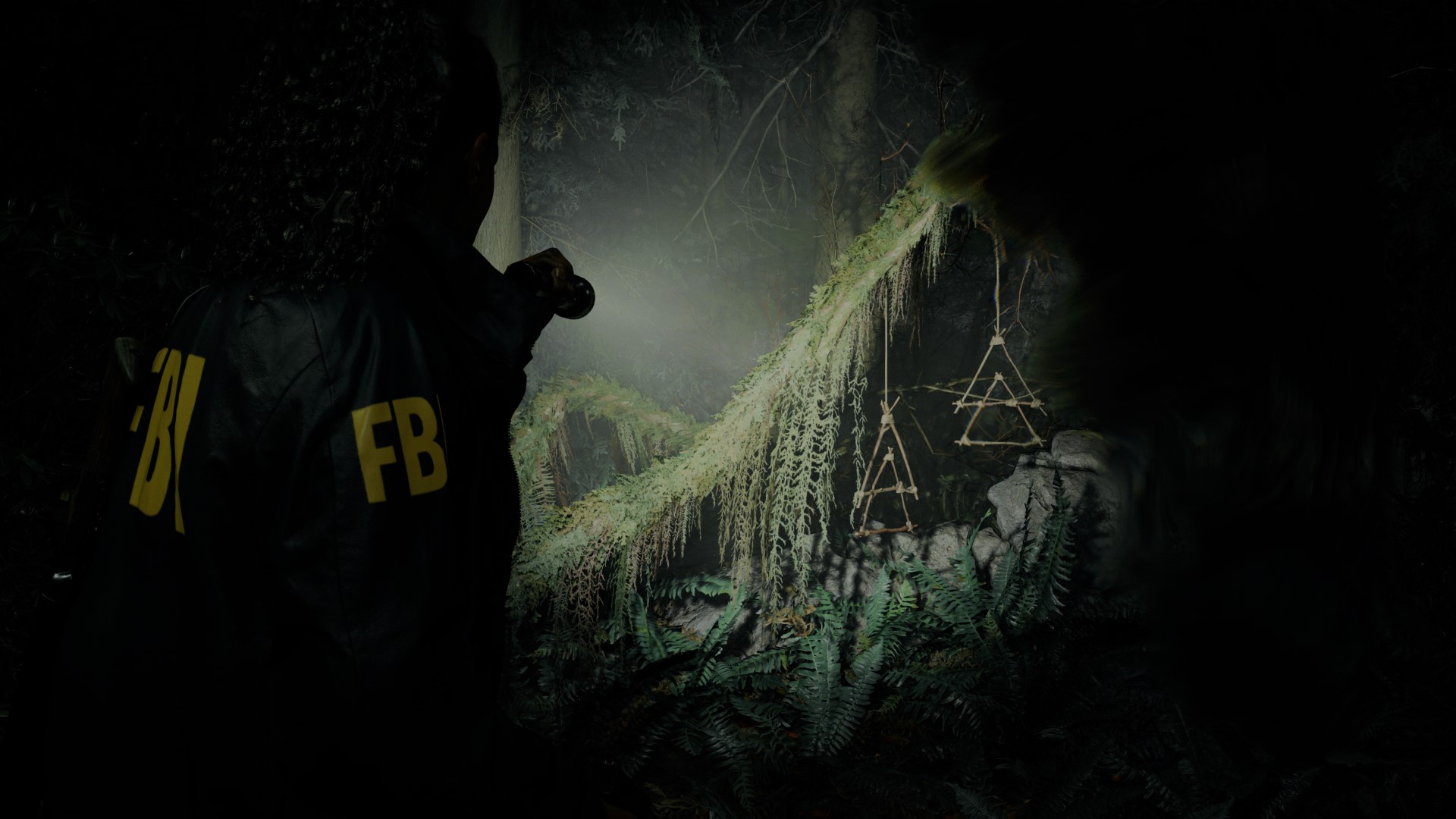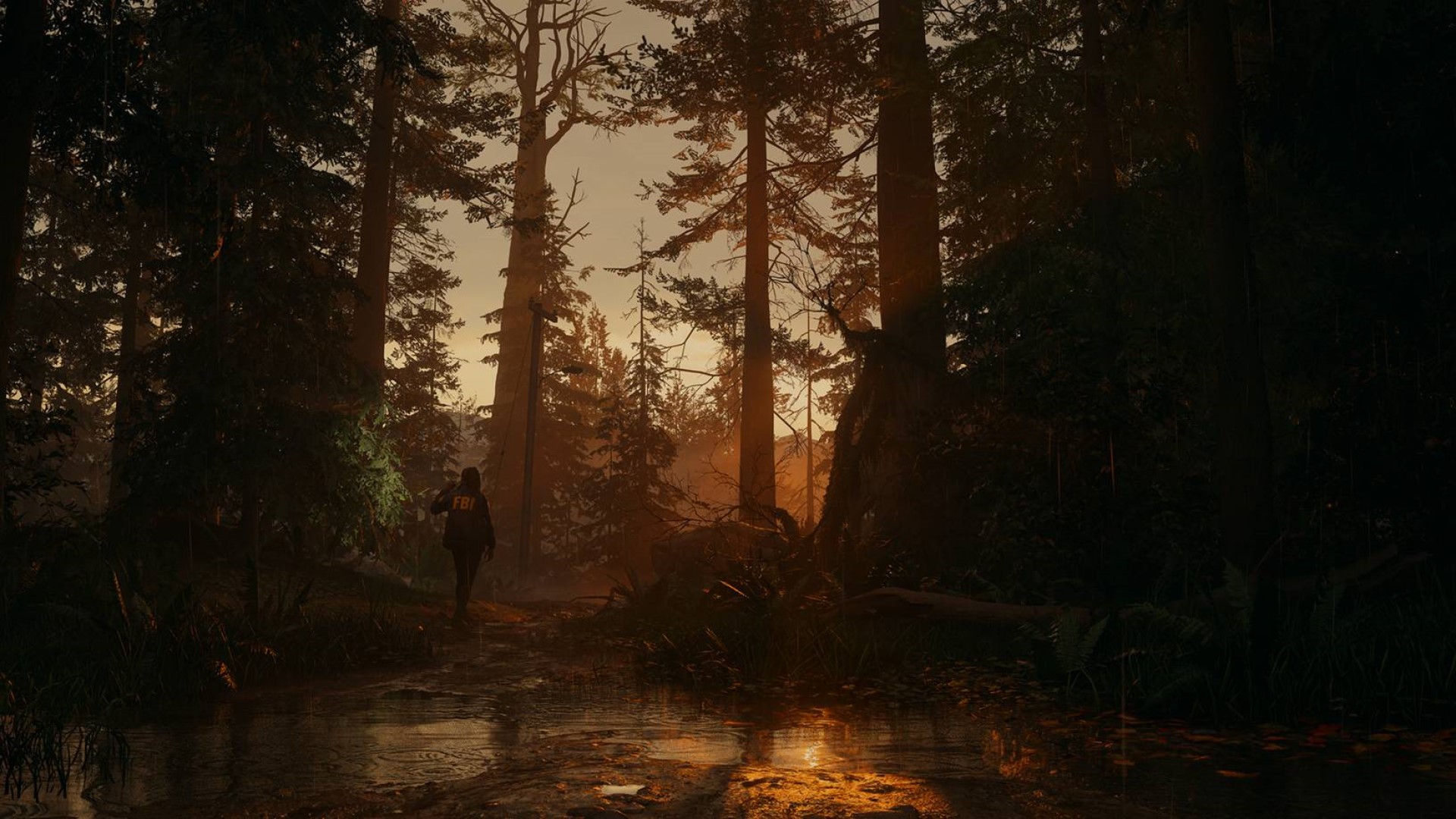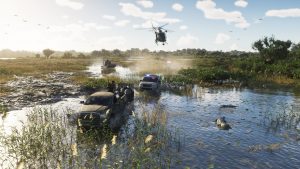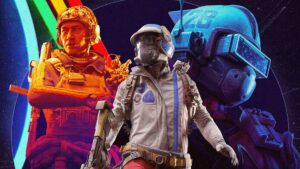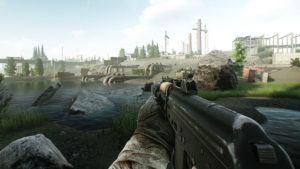
The wait for an Alan Wake sequel has dragged on for over a decade, but Remedy Entertainment’s long-awaited Alan Wake 2 is finally almost upon us. Set to launch for PC and current-gen consoles later this month, the survival horror title has looked increasingly promising in all that we have seen of it so far, and to get more insight into what’ll make it tick ahead of its imminent release, we recently had the chance to send over some of our most burning questions about the game to its developers. Below, you can read our interview with game director Kyle Rowley.
"Just as we were coming up with the concept for Alan Wake 2, Capcom released Resident Evil 2’s remake. This game’s ability to modernise a 20-year-old classic and its amazing reception definitely made us more confident in our decision to switch the genre, for sure."
Alan Wake 2 is Remedy’s first true survival horror game, but some of the studio’s past games have featured some very strong horror elements, from Control to, of course, the first Alan Wake. Is developing an out-and-out survival horror game something that the team has had its eye on for some time, or was it an idea that emerged specifically for this project?
Not really, no! As a studio we enjoy telling interesting, complex stories first and foremost. Luckily that can be done in many different genres! Making Alan Wake 2 a survival horror game happened because we felt it was the best choice for this game. Reflecting back on Alan Wake 1, where we felt there was a dissonance between the more slow burn horror story and the more fast paced action combat, we wanted to bring those two closer together. Survival horror allows us to do that. We have less, but more meaningful combat, and a slower paced gameplay experience with a much larger emphasis on exploration and puzzle solving – this allows us more room for building the kind of story we feel belongs in an Alan Wake game.
The survival horror genre has seen an explosion in popularity in recent years. How much was that a factor in Alan Wake 2’s development?
Well, it definitely didn’t hurt!
Just as we were coming up with the concept for Alan Wake 2, Capcom released Resident Evil 2’s remake. This game’s ability to modernise a 20-year-old classic and its amazing reception definitely made us more confident in our decision to switch the genre, for sure.
We’ve seen the horror genre span multiple different styles over the years, from games that are more action-focused to those that are more deliberate in their pacing, from games that lean towards psychological horror to ones that love a good jump scare. What would you say is Alan Wake 2’s primary approach? How does it blend its horror elements with the cerebral storytelling style that Remedy experiences have always been known for?
Oh, for Alan Wake 2 we are much more interested in the type of horror that is a slow burn- where the atmosphere and audio does a lot of the heavy lifting. If I recall correctly, one of the bullet points on our core game pillars is “atmosphere over jump scares” – which says a lot.
The Silent Hill franchise and how it utilises atmosphere and the sense of dread that builds up slowly over time was a key point of reference. As we are a more psychological horror experience, we knew we wanted to include a lot of audio-visual design to showcase our hero characters state of mind and have that reflected in the world design. You know, Alan’s experience in the Dark Place manifests itself from his mind. His demons are all laid out to bare there, so we can use that as a means to create an emotional response in the player. Instability, a sense of paranoia – these are all psychological horror elements manifesting in gameplay mechanics and our world design.
Given the long gap between Alan Wake and Alan Wake 2, and the fact that the sequel is an entirely different genre, how have you ensured that it still feels like an Alan Wake game in spite of all the differences?
For us, a lot of what make’s Alan Wake feel like Alan Wake is its world, its characters, its core themes – and all of those elements are still here in the sequel. Whether that be light vs darkness, which we have reshaped from Fight with Light to Survive with Light or its core narrative theme of fiction vs reality. It’s quirky characters and daytime scenes. The primordial forest of the Pacific Northwest – it’s all still here in Alan Wake 2.
Even gameplay wise, while yes, the game is slower paced – we have in fact added to the experience from Alan Wake 1, not taken anything away. What made Alan Wake 1 feel like Alan Wake 1 is still present in the sequel.
"For Alan Wake 2 we are much more interested in the type of horror that is a slow burn- where the atmosphere and audio does a lot of the heavy lifting. If I recall correctly, one of the bullet points on our core game pillars is “atmosphere over jump scares” – which says a lot."
Coming to what’s probably one of Alan Wake 2’s headlining features – its dual-protagonist approach – how did the idea for that first come about? How difficult was it to ensure that Alan and Saga’s sections felt sufficiently different from each other, but that the two put together would feel like part of a single, cohesive story?
The idea of two playable characters has been around from before we properly started concepting the game. It’s been a very high-level narrative idea from Sam, even back to when we were working on Quantum Break. We hadn’t figured out how it would work, or the structure of the game or anything, but we knew we wanted to do it – we’ve tried (and failed) to have multiple protagonists before in our previous games.
Now, 13 years after the release of the first game, we think Saga acts as a very important point of view character for players who have not played the first game. She doesn’t know anything about the events of Alan Wake 1 when the game begins, so as she is learning what happened is uncovering this supernatural mystery, players are going along this journey with her.
It was important for us that the two different characters gameplay felt familiar when you were switching so it didn’t feel like you were having to learn to play a new game each time you switched, but at the same time we wanted each one to feel unique. Generally, we have the same controls, the same high-level concepts, but their situations and individual roles in the story give each mechanic a different context.
Given Alan Wake 2’s dual-protagonist approach and the freedom it affords to players in switching back and forth between the Alan and Saga, what was the process like of putting the story together and ensure that players would get a full, coherent narrative regardless of how they play?
It was complicated! We changed how and when we introduce the switching mechanic to players a few different times as it was either causing confusion, or players were being onboarded to the different characters mechanics too far part which made the pacing feel totally off.
The story we have written for this game only works because of the way we have structured the game. If we have structured the game where we as developers were totally in control of when the player switches to the other character, we would have written a completely different story.
Ultimately it was important for us to make sure the stories work independently of each other, but at the same time when they are consumed as a whole, they add additional context and reveals to each other. No matter the order you play the game, the story works and is an enjoyable experience. That was very important to us.
What can you tell us about Alan Wake 2’s dialogue options? Is it something that will impact the way the story plays out, or is it more of a tool to make engaging with the story and the worldbuilding more enjoyable?
Building on top of what we did in Control, we wanted to add some player agency to the storytelling. As an FBI profiler investigating a mystery, it felt natural for us to allow the player to question characters. While the different questions don’t significantly branch the story, we do unlock questions based on what the player has discovered elsewhere in the world, so it allows us to lean on a more non-linear mission design philosophy.
Saga’s Mind Place and Alan’s Writer’s Room are among Alan Wake 2’s most intriguing new elements. How did the idea for this first come about? In terms of the actual mechanics, how heavily would you say the game focuses on that side of the experience as compared to the horror side?
We always try and start developing game mechanics around the characters of our stories. As Saga is an FBI profiler and Alan is a writer, we knew that we wanted to represent these aspects in their gameplay somehow. It actually started with Saga and her profiling. How can we visualise Saga profiling characters? That led us to a game space that sits inside the characters head and from there we fleshed it out to include the case board for piecing together evidence, the plot board for rewriting reality and the other modules we have there (map, collectibles etc.).
"I think we did this really well in Control with how we handled the events of Alan Wake. If you haven’t played Alan Wake, those are cool bits of additional world building, but if you HAVE played Alan Wake, it adds a whole additional layer of storytelling and excitement – that is what we aim for."
From Control to Quantum Break and even going all the way back to Max Payne, one thing that Remedy’s games have always been known for is their high-octane combat and action. What’s the process been like of figuring out how to translate something like that to a survival horror experience, which I imagine would have to be much slower and more deliberately paced owing to its very nature?
While different, the fundamentals of creating satisfying combat is very similar no matter how fast paced it is or where you decide to put your focus. We have an amazing team of developers who know how to create a fun combat experience, so we just needed to decide in which direction we would go.
Compared to Alan Wake 1, we wanted the combat to feel more physical. More desperate. We wanted enemies to have more presence in the experience. As the enemies are harder to kill, they are on screen for a longer period of time, so we needed to put more emphasis on animation quality and properly represent all the potential states they can move through (aware of player, unaware of player, hunting player etc.).
Compared to the first game, we wanted players to have to be more tactful about how they use their bullets and resources. You kill an enemy much more efficiently if you place your shots or use certain consumable items.
The Remedy Connected Universe has been properly established by now, but you’ve stressed that previous games aren’t going to be required reading if a newcomer is looking to jump in. How challenging has it been to ensure that you strike the right balance between expanding that universe and rewarding those who’ve invested in it while also telling a story that’s self-sufficient and doesn’t alienate newcomers?
Yeah, I mean, it’s always a balancing act, right? We always start each game with the goal of making it standout and be an amazing game on its own. After we are confident in that, we start exploring how we can connect it to other games in the Remedy Connected Universe. For us, all those easters eggs and connections are what we love doing – but even then, those connection points need to make sense and be interesting for someone who has no idea what the characters or events they are referring to actually are.
I think we did this really well in Control with how we handled the events of Alan Wake. If you haven’t played Alan Wake, those are cool bits of additional world building, but if you HAVE played Alan Wake, it adds a whole additional layer of storytelling and excitement – that is what we aim for.
There was a much heavier emphasis on exploration and getting to know your surroundings in Control than perhaps any other Remedy game in the past. Is that something that’s going to continue with Alan Wake 2? Should players expect it to emphasize exploration just as much as Control did?
Yes, for sure! Control was the first game where we set out to allow players more agency in how they move through the world, and we wanted to continue that in Alan Wake 2. We have four different hub areas that are completely free for players to explore. Our missions are also quite non-linear and have you back tracking through areas in order to proceed.
This kind of non-linear mission design is a staple of the survival horror genre as well, so we wanted to live up to player expectations there.
"Control was the first game where we set out to allow players more agency in how they move through the world, and we wanted to continue that in Alan Wake 2. We have four different hub areas that are completely free for players to explore. Our missions are also quite non-linear and have you back tracking through areas in order to proceed."
It’s well documented that Remedy has tried multiple times, across quite a lengthy period of time, to get Alan Wake 2 off the ground. What is it about this project or this IP that draws the team to it so strongly? And what was it about this particular set of circumstances and this attempt to kickstart the project that helped finally get things in motion?
I think after the first Alan Wake, we just really wanted to continue his story. We were not done with Wake’s journey and felt we could take the foundations of the first game and improve upon it for the sequel.
We’ve actually been trying to get Alan Wake 2 made ever since the first one released. We had a concept and prototype for Alan Wake 2 we developed straight after the first one launched. Unfortunately, it never went forward, but a lot of the ideas for that game ended up in Alan Wake’s American Nightmare. The same can be said for how Quantum Break came about, it also started out as a concept for Alan Wake 2. The same for Control! We just really wanted to make this game.
Luckily, after Control came out, single player, narrative driven experiences were products publishers were more interested in investing in again. Also, horror in general, both across games with the remake of Resident Evil 2 and in popular culture with a lot of A24’s movies, was also on the rise. That, combined with us getting the publishing rights back for the original game meant everything kind of just fell into place for us making the sequel now – which we are all very happy about, obviously!








